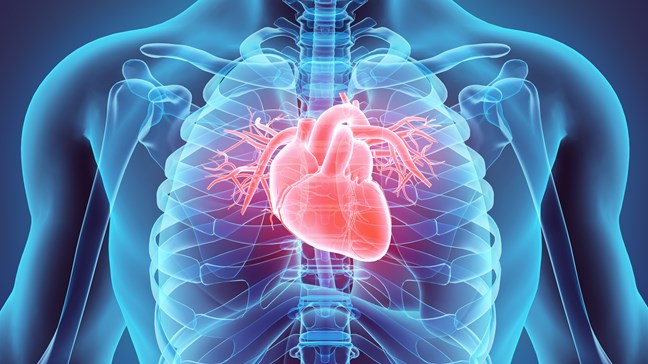Key Points:
- Imaging may be underused in patients with ischemic heart failure (HF) to evaluate ischemia/viability and guide management.
- The Alternative Imaging Modalities in Ischemic Heart Failure (AIMI-HF) Project directly compared advanced imaging modalities (CMR or PET vs. SPECT) to determine its impact on a composite endpoint of cardiac death, myocardial infarction, resucitated cardiac arrest and cardiac re-hospitalization.
- For the total study population, the primary endpoint was similar between the CMR/PET vs. SPECT groups, with a trend towards improved outcomes in the CMR/PET groups (HR 0.95, 95% CI 0.71-1.25, p=0.696).
- Investigators concluded that choice of imaging study was not associated with a difference in outcomes, though an advanced imaging strategy with PET/CMR may be associated with a reduction in CV death.
Though medical imaging is widely used and in cardiology and one of the fastest growing healthcare sectors, its use to positively impact therapy decisions is limited by lack of understanding of the clinical impact. Concomitantly, the prevalence of heart failure (HF) continues to increase over time and mortality remains high. Patients with ischemic HF have a uniquely elevated risk. Cardiac imaging has the unique potential to help bridge this gap by evaluating ischemia and viability to help determine optimal management strategies such as revascularization in patients with ischemic HF. Therefore, the Alternative Imaging Modalities in Ischemic Heart Failure (AIMI-HF) Project (NCT01288560) sought to directly compare advanced imaging modalities in patients with ischemic HF.
Results of the AIMI-HF trial were presented by Dr. Lisa Mielniczuk (University of Ottawa Heart Institute) on behalf of the IMAGE HF Investigators at the 2023 American College of Cardiology Scientific Sessions as Featured Clinical Research on Saturday, March 4th. This trial was noted to be the largest prospective study addressing the clinical question of the role of advanced (cardiac magnetic resonance imaging [CMR] or positron emission tomography [PET]) and single-photon emission computerized tomography [SPECT] imaging in guiding management decisions for ischemia and viability for patients with ischemic HF.
This 15-center, international trial enrolled patients with known or highly suspect CAD documented by coronary angiography, previous MI or moderate ischemia or scar and symptomatic HF (NYHA functional class II-IV + EF < 45% or NYHA functional class I + EF <30%) . Patients were excluded if they had medical conditions that precluded revascularization, acute coronary syndrome <4 weeks from enrollment, or indications for emergent surgery or valve surgery. The primary endpoint was the composite of cardiac death, myocardial infarction, resuscitated cardiac arrest, and cardiac hospitalization. A propensity score matching was used to adjust for effects of confounding variables on survival between advanced modalities. Notably, patients were either randomized or included in the registry arm due to inability to randomize at some sites because of clinical condition or availability of imaging modalities.
The AIMI-HF trial ultimately enrolled 1381 patients. The overall patients population was divided according to the clinical question: 672 to the ischemia question and 709 to the viability question. For each question, patients were randomized to SPECT or advanced imaging ( CMR or PET). Most of the patients (85.8%) were male with median (±SD) age 66.7±9.9 years, and EF 28.7±8.3% with similar NYHA classes between groups. Patients in the SPECT group had more prevalence of previous revascularization and higher incidence of baseline arrhythmias. The study found that over a median of 24.1 months, the cumulative incidence of the primary composite was 33.4% in the PET/CMR groups and 37.4% in the SPECT groups (HR 0.95, 95% CI 0.71-1.25, p=0.696). Among the 672 patients who were included with the clinical question of their ischemia burden specifically (rather than viability), PET/CMR was associated with cumulative incidence of 31.5% for the primary endpoint vs. 37.1% for SPECT (HR 0.86, 95% CI 0.61-1.21, p=0.388). This was largely driven by less cardiac death in the PET/CMR groups (HR 0.61, 95% CI 0.38-1.00, p=0.049). Notably many more patients who had PET/CMR or question of viability were ultimately revascularized. In patients who did receive early revascularization, there was a trend towards higher composite outcome in the SPECT group but it did not meet statistical significance. During the live presentation at ACC, panelists point out that the baseline differences between groups may account for some of these findings.
Investigators concluded that the type of imaging modality did not significantly impact the primary outcome in either the total study population or randomized cohort; however, advanced cardiac imaging with PET/CMR was associated with a non-significant reduction in the composite of cardiac events as opposed to SPECT. Overall, revascularization was more likely in patients who received advanced imaging and there was a trend towards overall benefit in this early revascularization group. Limitations of the study included sample size, limited SPECT imaging studies included, and inability to control for all confounders even with use of propensity score matching.





